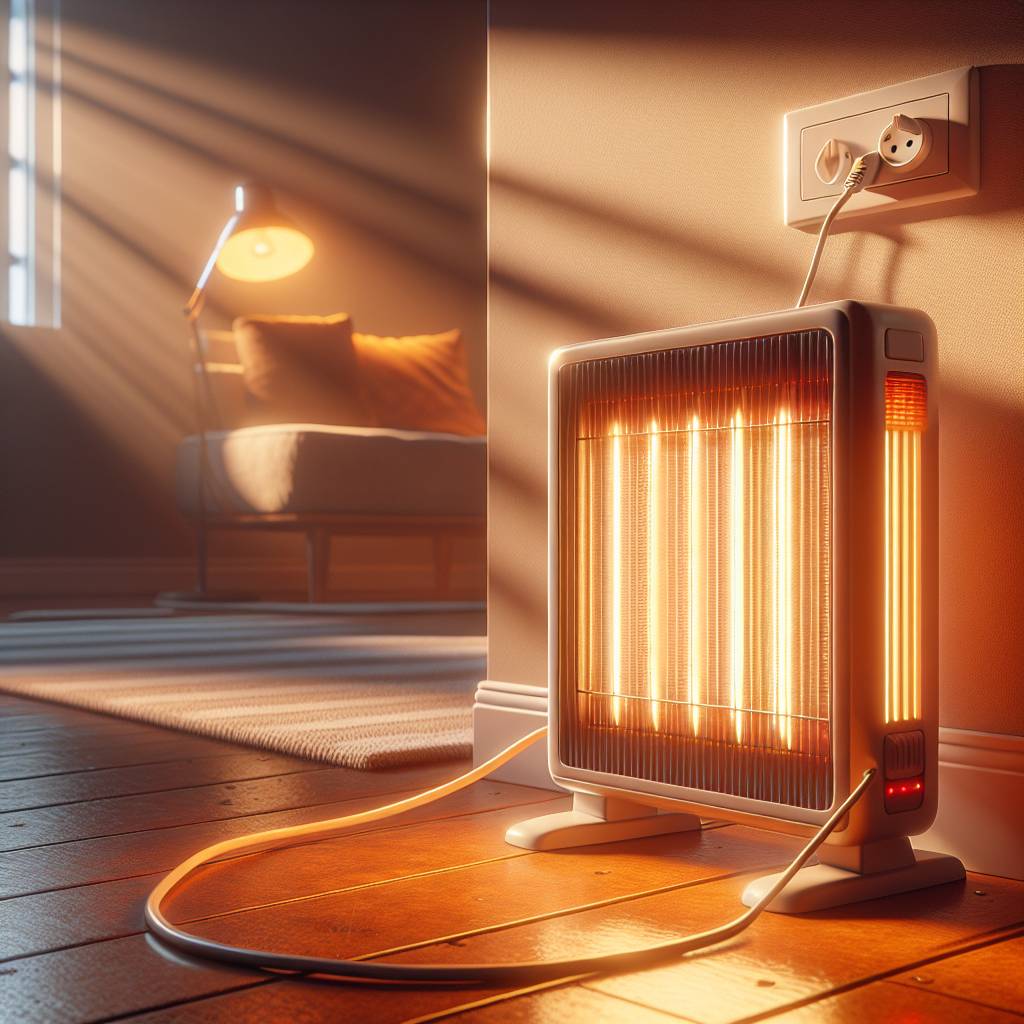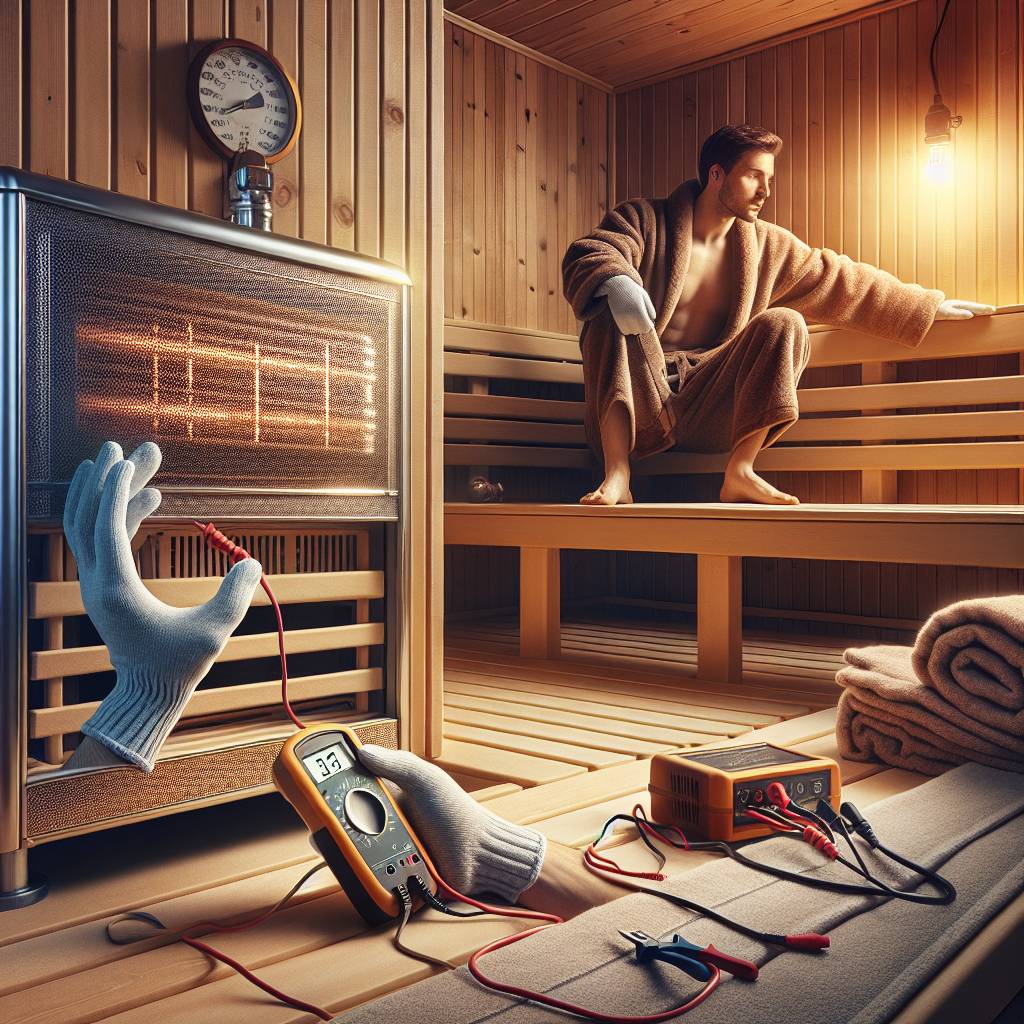When it comes to relaxation and wellness, saunas have been a staple for centuries. Today, as we delve into the realm of home saunas, the debate between electric and infrared options is gaining momentum. Comparing the energy efficiency of electric and infrared saunas is crucial for making an informed choice that aligns with both your well-being and sustainability goals. Understanding the nuances of these sauna types can lead to a more energy-efficient and cost-effective home sauna experience. Let’s explore the differences, benefits, and energy-saving potential of traditional electric versus infrared saunas in this comprehensive comparison.
Key Takeaways
- Consider energy efficiency: When choosing between electric and infrared saunas, prioritize energy efficiency to reduce long-term operating costs.
- Opt for Infrared Saunas: Infrared saunas offer quicker warm-up times and target the body directly, providing a more efficient pulse heat effect compared to electric saunas.
- Monitor Power Consumption: Be mindful of the power consumption of the sauna you select to ensure it aligns with your energy usage goals and budget.
- Regular Maintenance is Key: Proper installation and regular maintenance of your sauna can enhance its energy efficiency and lifespan.
- Prioritize Health and Safety: Always prioritize health and safety considerations when using saunas to avoid any potential risks or hazards.
- Make an Informed Decision: Consider all factors such as energy efficiency, warm-up time, heat distribution, and maintenance requirements when choosing the right sauna for your needs.
Understanding Saunas
Electric vs. Infrared
Electric and infrared saunas differ in energy efficiency. Electric saunas heat the air directly, while infrared saunas use infrared light to heat objects inside the sauna. The heating mechanism of traditional electric saunas consumes more energy compared to infrared saunas.
When it comes to cost-saving benefits, infrared saunas are more efficient. They require less energy to operate due to their direct heating method, resulting in lower electricity bills. In contrast, electric saunas heat the air, leading to higher energy consumption and costs.
Design and Efficiency
The design of infrared saunas plays a crucial role in their energy efficiency. With well-insulated walls and efficient sealing, infrared saunas retain heat effectively, minimizing energy loss. These design elements contribute significantly to reducing overall energy consumption.
Efficient design elements such as proper insulation and sealed doors ensure that infrared saunas maintain optimal temperatures without excessive heat loss. By focusing on design, users can maximize energy savings and enhance the sauna experience.
Heater Types
Both electric and infrared saunas utilize different heater types for heating purposes. Electric saunas commonly use energy efficient electric heaters, which warm the air inside the sauna. On the other hand, infrared saunas employ ceramic or carbon fiber heaters that emit infrared light to heat objects directly.
The energy consumption of heater types varies, with electric heaters consuming more power than ceramic or carbon fiber heaters. In terms of maintaining optimal sauna temperatures, ceramic or carbon fiber heaters are more efficient due to their ability to target objects directly with infrared heat.
Energy Efficiency Explained
Infrared Sauna Benefits
Using an infrared sauna offers various benefits for energy efficiency. The radiant energy emitted by infrared saunas directly heats the body, resulting in quicker and more efficient warming compared to traditional electric saunas. This targeted heating approach not only saves energy but also enhances the overall sauna experience.
- Unique Benefits: Infrared saunas operate at lower temperatures, consuming less electricity while still providing the desired health benefits.
- Energy Savings: By focusing on heating the body rather than the entire sauna room, infrared saunas reduce energy wastage, leading to significant energy saving benefits.
- Advantages Over Electric Saunas: Compared to electric saunas, infrared models require less power to operate, making them a more energy-efficient choice for both residential and commercial settings.
Electric Sauna Consumption
The electricity consumption of electric saunas varies based on usage patterns and sauna size. Electric saunas typically consume more power than infrared ones due to the need to heat the air in the entire room. When compared to other heating systems, electric saunas may have higher energy requirements, impacting operational costs.
- Consumption Analysis: Electric saunas tend to have higher electricity consumption rates, especially when used frequently or for extended periods.
- Comparison with Other Systems: In comparison to gas or wood-fired saunas, electric models often result in higher energy usage, affecting overall operational expenses.
- Impact on Operating Costs: The high electricity consumption of electric saunas can lead to increased utility bills, making them less cost-effective over time compared to more energy-efficient alternatives.
Key Efficiency Factors
Several factors contribute to the energy efficiency of infrared saunas, setting them apart from traditional electric models. These include the type of heating elements used, insulation quality, and sauna design. Understanding and considering these factors are crucial when selecting a sauna type that aligns with both your energy-saving goals and health needs.
- Efficiency Contributors: Infrared saunas utilize advanced heating elements that emit radiant heat directly onto the body, reducing heat loss and improving efficiency.
- Differentiation from Electric Saunas: The targeted heating approach of infrared saunas minimizes energy waste associated with heating empty spaces, enhancing overall efficiency.
- Importance of Consideration: When choosing between sauna types, evaluating efficiency factors such as heating technology and insulation can help maximize energy savings and optimize your sauna experience.
Warm-up Time
Infrared Speed
Infrared saunas boast rapid heating times, typically taking around 15-20 minutes to reach optimal temperature. This quick warm-up is attributed to the infrared heat directly warming the body, unlike electric saunas that heat the air first. The efficient process of infrared saunas not only saves time but also conserves energy.
The speedy warm-up of infrared saunas is a result of emitting infrared light, which directly heats objects and individuals without needing to warm the entire space. This focused approach not only ensures a faster heating process but also reduces energy wastage. In contrast, traditional electric saunas can take up to 30-40 minutes to reach the desired temperature due to their reliance on heating the air.
Electric Delay
Electric saunas, in comparison, exhibit a noticeable delay in reaching optimum heat levels, often requiring 30-40 minutes for full warmth. This delayed heating process in electric saunas contributes to higher energy consumption, as the sauna needs to maintain elevated temperatures for an extended period.
The slow warm-up time in electric saunas can lead to energy inefficiency, with prolonged periods of heating consuming more power than necessary. The delayed heating feature in electric saunas can result in higher electricity bills due to the extended duration required to achieve desired temperatures.
Pulse Heat Effect
Infrared Mechanism
Infrared saunas utilize infrared radiation to directly heat the body instead of warming the air. The infrared waves penetrate the skin, raising the body’s core temperature. This mechanism ensures a more efficient and effective heating process compared to traditional saunas. The energy efficiency of infrared saunas is attributed to their ability to target the body directly, reducing warm-up times and energy wastage.
The infrared mechanism in saunas enhances energy efficiency by focusing on heat absorption by the body rather than heating the entire sauna room. This targeted approach results in quicker heating times and lower overall energy consumption. Compared to traditional methods that heat the air first, infrared saunas provide a more direct and efficient way to generate heat, making them a preferred choice for those seeking energy-efficient options.
Electric Comparison
Electric saunas are known for their energy efficiency, consuming less power compared to other heating systems. The electric heating elements in these saunas convert electricity into heat, ensuring a consistent and even distribution of warmth. Despite their initial higher price, electric saunas prove cost-effective in the long run due to their lower energy consumption rates.
When comparing the energy consumption of electric saunas with other heating systems, electric models often come out as more efficient and environmentally friendly options. Their ability to maintain a steady temperature without excessive power usage makes them ideal for residential and commercial settings alike. The cost implications of using electric saunas vary based on factors like usage frequency and electricity rates but generally prove economical over time.
- Pros of Infrared Saunas:
- Direct heat absorption by the body
- Faster heating times
- Lower overall energy consumption
- Cons of Electric Saunas:
- Initial higher price
- Dependence on electricity supply
Power and Consumption
Lower Maximum Power
Infrared saunas have lower maximum power requirements compared to electric saunas. This means they consume less electricity. The lower power needs of infrared saunas contribute to significant energy savings over time. By operating at reduced power levels, infrared saunas are more energy-efficient.
The concept of lower maximum power in infrared saunas translates to decreased electricity consumption. This results in cost savings on energy bills. Infrared saunas’ ability to function effectively with lower power requirements makes them a sustainable choice for eco-conscious individuals seeking energy-efficient options.
Reduced power consumption in infrared saunas not only leads to energy savings but also aligns with efforts to reduce overall energy usage. By opting for an infrared sauna with lower power needs, individuals can enjoy the benefits of regular sauna sessions without significantly impacting their electricity bills.
Energy Cost Analysis
When it comes to the energy cost analysis, operating an infrared sauna typically incurs lower expenses compared to electric saunas. The efficiency of infrared saunas allows for cost-effective use over extended periods. In contrast, electric saunas may result in higher energy bills due to their higher power consumption.
Comparing the energy expenses associated with different types of saunas reveals that infrared saunas offer a more economical option in terms of long-term operation. The reduced energy costs make infrared saunas an attractive choice for individuals looking to balance relaxation with cost efficiency.
To reduce energy costs further, individuals can implement strategies such as optimizing sauna usage times, maintaining proper insulation, and ensuring regular maintenance of sauna equipment. These measures contribute to enhancing the overall energy efficiency of the sauna and help minimize operational expenses.
Installation and Maintenance
Installing Infrared Sauna
Installing an infrared sauna involves setting up the unit, typically requiring assembly of the walls and ceiling. It is crucial to follow the manufacturer’s instructions precisely for a seamless installation process. To optimize energy efficiency during installation, ensure a proper seal around the sauna to prevent heat loss.
- Seal gaps in walls and ceilings
- Ensure a tight fit during assembly
Professional installation for an infrared sauna can significantly enhance energy savings. Experts can ensure that the sauna is correctly installed, maximizing its efficiency and reducing energy consumption over time.
Electric Sauna Setup
When setting up an electric sauna, it is essential to position it in a well-insulated area to minimize heat loss. The setup directly impacts the energy consumption, with proper positioning leading to more efficient operation. Opt for a dedicated electrical circuit to prevent overloading and ensure safe usage.
- Proper positioning reduces heat loss
- Dedicated circuit prevents overloading
To optimize energy efficiency during the setup process, consider insulating the walls and ceiling around the electric sauna. This insulation helps retain heat within the sauna, reducing energy wastage and promoting cost-effective operation.
Maintenance Tips
Maintaining saunas regularly is key to improving their energy efficiency. Clean the sauna components, such as heaters and vents, to ensure optimal performance. Regularly inspecting for wear and tear can prevent energy leaks and prolong the lifespan of the sauna.
- Clean heaters and vents regularly
- Inspect for wear and tear
Regular maintenance plays a crucial role in reducing energy consumption by ensuring that all components are functioning efficiently. By addressing any issues promptly, you can prevent energy wastage and maintain peak performance of the sauna.
Health and Safety Considerations
EMF Ratings
Electromagnetic Field (EMF) ratings are crucial in saunas to ensure user safety and minimize exposure. Electric saunas generally have higher EMF levels compared to infrared saunas. High EMF emissions can impact both energy efficiency and health, potentially leading to adverse effects on the body.
When it comes to EMF levels, electric saunas typically have readings ranging from 2-8 milligauss, while infrared saunas maintain lower levels below 2 milligauss. These variations in EMF emissions can affect the overall performance and safety of the sauna environment.
Material Quality
The quality of materials used in saunas plays a significant role in enhancing energy efficiency. Opting for high-quality materials can improve insulation, heat retention, and overall performance. Different sauna materials such as cedar, hemlock, and basswood offer varying levels of energy-saving capabilities.
Cedar, known for its excellent insulation properties, helps retain heat efficiently, reducing energy consumption during sauna sessions. Hemlock and basswood also contribute to energy efficiency by providing good insulation and durability, ensuring long-term savings on energy costs.
Hydration Tips
Maintaining proper hydration is essential for optimizing energy efficiency during sauna sessions. Adequate hydration levels help regulate body temperature and prevent dehydration, enhancing the overall sauna experience. To stay hydrated, it is recommended to drink water before, during, and after using the sauna.
Proper hydration not only supports energy efficiency but also promotes overall well-being and performance. By following hydration tips and consuming sufficient water, sauna users can maximize the benefits of their sessions while minimizing the risk of dehydration-related issues.
Choosing the Right Sauna
Home vs. Public Sauna
When comparing energy usage between home and public saunas, it’s essential to consider the size and design differences. Home saunas are typically smaller and more compact, requiring less energy to heat up compared to larger public saunas. The frequency of use also plays a significant role in energy consumption, with regular sauna users benefiting from the efficiency of a home sauna.
Factors such as insulation and ventilation can influence the energy efficiency of a sauna. Home saunas can be tailored to have better insulation, reducing heat loss and ultimately saving energy. Public saunas, on the other hand, may have higher ceilings and larger spaces, requiring more energy to maintain the desired temperature. By choosing a corresponding sauna type based on your usage patterns, you can maximize energy efficiency and reduce operating costs.
- Pros:
- Cost-effective for regular users
- Customizable for better insulation
- Cons:
- Limited space compared to public saunas
- May require upfront investment for insulation improvements
Frequency and Duration
The frequency of sauna use directly impacts energy consumption. Regular sauna sessions lead to more consistent heating requirements, optimizing energy usage over time. To save energy, it’s recommended to establish a routine for sauna sessions rather than sporadic use. By incorporating energy-saving practices, such as preheating the sauna before use or using timers to control session duration, users can further enhance energy efficiency.
Optimizing sauna session duration is crucial for energy efficiency. Longer sessions consume more energy, especially in larger saunas where additional heat is needed to maintain temperature levels. By balancing session length with personal comfort levels, individuals can enjoy the benefits of sauna therapy while minimizing energy waste. Understanding the relationship between duration and energy efficiency allows users to make informed choices for an optimal sauna therapy experience.
- Plan regular sauna sessions for consistent energy consumption.
- Use timers or smart controls to manage session duration effectively.
Summary
You’ve now gained a comprehensive understanding of the energy efficiency of electric and infrared saunas. From exploring how each type operates to delving into their warm-up times, power consumption, and even health considerations, you’re well-equipped to make an informed choice. Remember to prioritize your specific needs and preferences when selecting the right sauna for you. Whether it’s about conserving energy, enjoying quick heat-up times, or focusing on health benefits, the decision ultimately rests in your hands. Take your time, weigh the factors that matter most to you, and soon enough, you’ll be enjoying the relaxing sauna experience you desire.
Frequently Asked Questions
What is the main difference between electric and infrared saunas?
Electric saunas use traditional heating elements to warm the air inside the sauna, while infrared saunas use infrared light to directly heat the body. Electric saunas heat the air, while infrared saunas heat the body directly.
Which type of sauna is more energy-efficient: electric or infrared?
Infrared saunas are generally considered more energy-efficient than electric saunas. This is because infrared saunas heat the body directly, requiring less energy to operate compared to electric saunas that heat the air in the entire sauna room.
Do electric saunas have a faster warm-up time compared to infrared saunas?
Yes, electric saunas typically have a faster warm-up time compared to infrared saunas. Since electric saunas heat the air directly, they can reach the desired temperature quicker than infrared saunas that need to warm up the body through infrared light.
How does the pulse heat effect differ between electric and infrared saunas?
Electric saunas provide a consistent level of heat throughout the session, while infrared saunas create a pulse heat effect by delivering intense bursts of heat followed by cooling periods. This pulsating heat in infrared saunas is believed to offer unique health benefits.
Are there significant differences in power consumption between electric and infrared saunas?
Electric saunas generally consume more power compared to infrared saunas due to their method of heating the air. Infrared saunas require less power as they directly heat the body, resulting in lower overall power consumption during operation.






